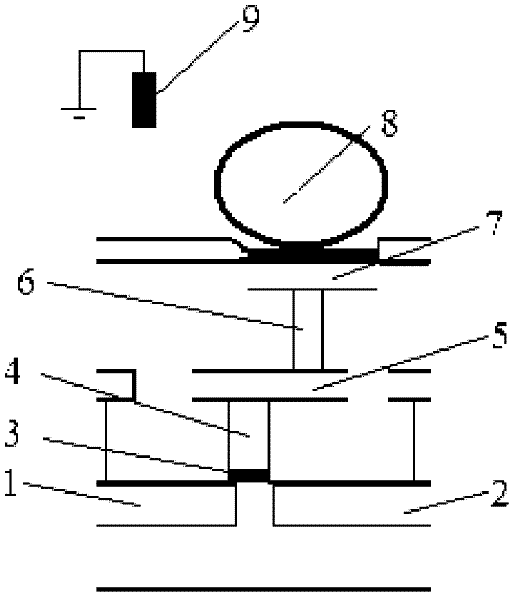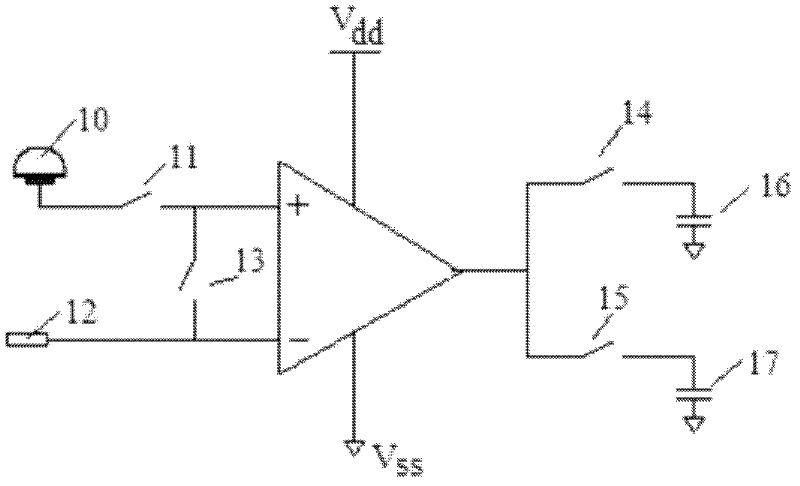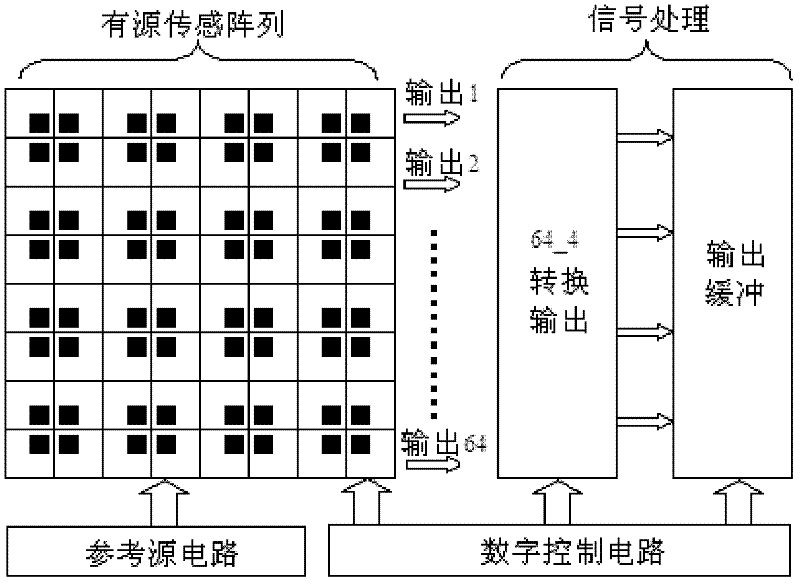Cell membrane potential sensor based on standard complementary metal oxide semiconductor (CMOS) process
A potential sensor and cell membrane technology, applied in new biosensing systems and medical fields, can solve the problems of cell membrane potential sensing unit being incompatible with standard CMOS process and unfavorable integration, and achieve convenient signal processing, elimination of environmental noise and fixed mode. Noise, the effect of improving the ability of parallel processing
- Summary
- Abstract
- Description
- Claims
- Application Information
AI Technical Summary
Problems solved by technology
Method used
Image
Examples
example
[0034] Example: The MOS tube gate of the cell membrane potential sensing unit based on the standard CMOS process is connected to the metal 1 through the contact hole, and the metal 1 is connected to the metal 2 through the through hole. Electrode, the microelectrode can be coupled with the cell to conduct the cell membrane potential, such as figure 1 shown. Because the cell membrane potential signal is relatively weak, a differential amplifier circuit is designed to preprocess it, and a PMOS tube is used as the input tube structure to improve the anti-noise ability of the circuit. Considering the instability of the sensor itself and the large amount of solution noise introduced, the output adopts a differential mode, one is used as a sensing signal, and the other is used as a reference signal. The difference between the two signals can eliminate part of the signal conversion circuit. fixed pattern noise, correlated subsampling circuit structures such as figure 2 shown.
[...
PUM
 Login to View More
Login to View More Abstract
Description
Claims
Application Information
 Login to View More
Login to View More - R&D
- Intellectual Property
- Life Sciences
- Materials
- Tech Scout
- Unparalleled Data Quality
- Higher Quality Content
- 60% Fewer Hallucinations
Browse by: Latest US Patents, China's latest patents, Technical Efficacy Thesaurus, Application Domain, Technology Topic, Popular Technical Reports.
© 2025 PatSnap. All rights reserved.Legal|Privacy policy|Modern Slavery Act Transparency Statement|Sitemap|About US| Contact US: help@patsnap.com



